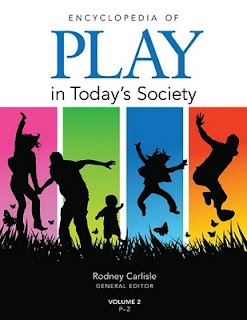The provocative London fashion designer Alexander McQueen died on February 11, 2010. He was born in 1969 into a large working class family. At 16 he saw a television documentary on the craft of tailoring and the dearth of apprentices taking up the trade. This prompted him to drop out of school to work at the clothier Anderson & Sheppard. His education in traditional tailoring continued at two other houses - Gieves and Hawks and at the theatrical costumer, Berman and Nathan. He later worked for two other designers before returning to London to attend Central St. Martin’s School of Art. His final project there garnered a great deal of publicity. The collection was based on Jack the Ripper and Victorian prostitutes. Locks of human hair (which were sold by prostitutes for people to buy for their lovers) were stitched into blood red linings of the clothing.
Subsequent collections have been inspired by movies, 17th century anatomists, photography, historical events and a host of other sources. In a show entitled “Taxi Driver,” his first after graduating from art school, models wore heavy eyeliner and punk-type clothing accented with paint mimicking the color of dried blood. In the spirit of the show they also sneered at and flipped off the audience. One of the most memorable pieces to be introduced was the “bumster,” trousers that rode so low on the hips that they revealed cleavage.
In the “Highland Rape” collection the designer mixed the McQueen tartan with military jackets, and tailored jackets with torn lace dresses and skirts. The runway was transformed for the collection as well – McQueen placed heather and bracken on the runway, and the models staggered rather than stalked the catwalk. To claims of misogyny, the designer replied that he was referencing the uprooting of the Scottish in the 17th and 18th centuries by the English.
In 1997 McQueen took over the top spot at Givenchy, vacated by fellow Englishmen, John Galliano. The agreement allowed him to continue designing for his own label. In his first show for Givenchy he surprised the public by creating a collection that a reviewer in the London Guardian called “dangerously polite.” Over their 5 year association his designs for and remarks about the French couturier drew the ire of the old guard. In late 2000 Gucci bought a 51 per cent share in McQueen’s company, a rival of Givenchy. In March of the following year he gave his last show for Givenchy.
In his Paris collection, shown in October 2009, McQueen once again gave the audience a lot to talk about. Plato’s Atlantis opened with a blue –tinged video of a topless model lying with snakes, models wore a prosthetic piece around their eyes. But one of the most alien-looking of all these elements were the shoes dubbed “lobster claw” because of its apparent likeness to the crustacean.
In 2003 the Council of Fashion Designers of America named him International Designer of the Year. In the same year Britain awarded him a CBE, (Commander of the British Empire). McQueen will be remembered for the sensational nature of his collections and the theatricality of his shows; however without the skills that he built early in his career as a tailor, he could not have reached the level of success that he had achieved. There are no full length biographies available in the United States on Alexander McQueen, but the following materials are a starting point for research.
Current Biography Yearbook (H.W. Wilson Co.) 2002 edition. A substantial biography that also includes a bibliography.
Encyclopedia of Clothing and Fashion, Valerie Steele, editor in chief (Charles Scribner's Sons, 2005) - also available as an
electronic resource through the Gale Virtual Reference Library (login with your library card number and PIN).
Contemporary Fashion [electronic resource], editor, Taryn Benbow-Pfalzgraf (St. James Press, 2002). Only available through the Gale Virtual Reference Library.
Extreme Beauty: The Body Transformed by Harold Koda. (Metropolitan Museum of Art; Yale University Press, 2001).
Fashion At The Edge: Spectacle, Modernity and Deathliness by Caroline Evans (Yale University Press, 2003).
G
lamour: Fashion + Industrial Design + Architecture, edited by Joseph Rosa, Virginia Postrel, Valerie Steele and Phil Patton (San Francisco Museum of Modern Art in association with Yale University Press, 2004).
Skin + Bones: Parallel Practices in Fashion and Architecture, organized by Brooke Hodge (Museum of Contemporary Art [Los Angeles]; Thames & Hudson, 2006).


 On the evening of Thursday, February 25, 2010, the Art, Music & Recreation Center will present the Cypress String Quartet in the Koret Auditorium for the program The Evolution of Bel Canto: A Cycle of Inspiration.
On the evening of Thursday, February 25, 2010, the Art, Music & Recreation Center will present the Cypress String Quartet in the Koret Auditorium for the program The Evolution of Bel Canto: A Cycle of Inspiration.









